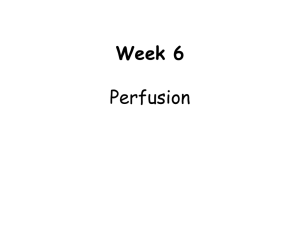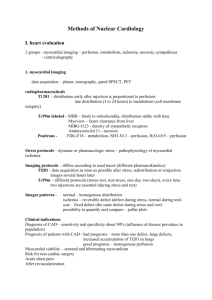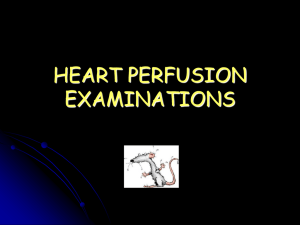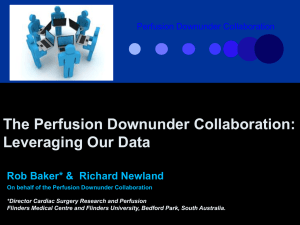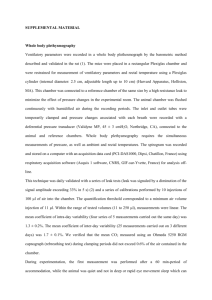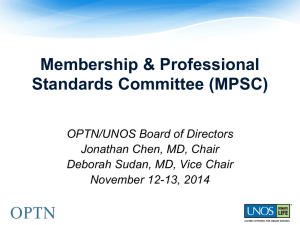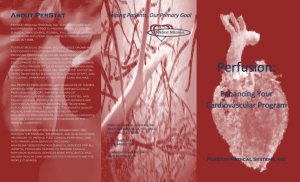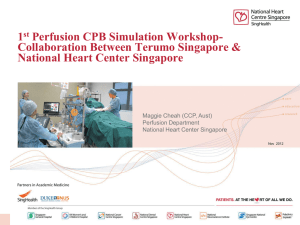Hyperpolarized Xe-129 in the Rat
advertisement
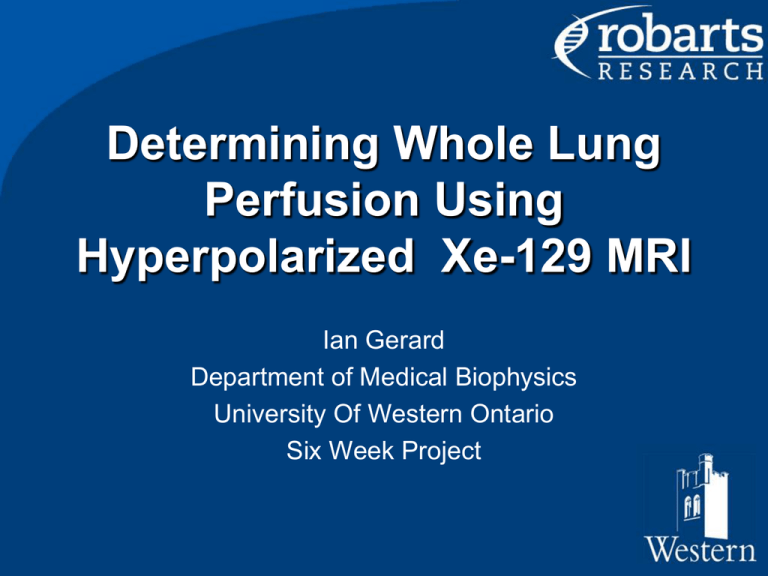
Determining Whole Lung Perfusion Using Hyperpolarized Xe-129 MRI Ian Gerard Department of Medical Biophysics University Of Western Ontario Six Week Project MR Imaging Basics B1 Sample RF Coil Gradient Coil Set Magnet z z m x y x y Hyperpolarized Media Isotope Spin * 107 rad s/T P (ppm) 1H 1/2 1/2 1/2 -1/2 26.75 20.37 6.73 7.40 5.11 3.89 1.28 1.41 3He 13C 129Xe (For T = 300 K and B0 = 3 T ) M NmP In General P Pth105 After Hyper-polarization Method Gas Exchange Model TTR Cc(r,t) Lc Ct(r,t) Lt Ca(t) FIN ra Xe VA Xe Xe D 2C ( r , t ) r 2 Xe Xe FOUT - C ( r , t ) t 0 Xe Gas Tissue Capillary Fig 1: Alveolar-Capillary model of Mansson [2]. Va is the alveolar volume measured at standard temperature and pressure. ra is the radius of the alveolus. Lt and Lc are the compartment lengths for tissue and capillary. C(r,t) is the xenon concentration in each respective compartment as a function of distance and time. F is the rate of pulmonary flow. Fin=Fout. -t TTR t S ( ) S0 1 e + S1t S1 αλpl (1 – H)F Methods Medical Air & O2 Ventilator 3He Or 129Xe 3T MRI Scanner Heater Rb Reservoir Polarization Cell Gas Cylinder 89% 4He 10% N2 1% Xe 794.8nm Circular Polarizer Magnet Polarized 129Xe Out Polarized 129Xe and 3He Valve Assembly Acid Port Ventilator Pilot Results: Xenon Pulse Sequence Chemically Selective Saturation Recovery (CSSR) 90o 90o RF Pulse ~193ppm t i f Loop N. Abdeen et al (2006) t Dissolved Gas Phase Phase Maximized Minimized Spectroscopy After Applying Pulse Sequence S (t ) S0 (1 - e -t / TTr ) + S1t Mansson Model: S (t ) S0 (1 - e -t / TTr ) + S1t Valid for all time. Tissue Spectroscopy and Model Fit Mansson Model: S (t ) S0 (1 - e -t / TTr ) + S1t Results: Representative Figure S (t ) S0 + S1t Linear fit applied to long time values Slope and intercept values are S1 and S0 respectively and used to calculate lung perfusion Calculated Lung Perfusion Typical Perfusion value from control rat 1.2 ± 0.2 Mansson et al. Rat Number Rat 1 Rat 2 Rat 3 PIP (cmH20) Mean Perfusion (ml s-1/ml) ± Std 7 ± 0.1 0.74 ± 0.05 11 ± 0.1 1.01 ± 0.01 12 ± 0.1 1.17 ± 0.03 17 ± 0.1 1.29 ± 0.04 7 ± 0.1 0.84 ± 0.05 12 ± 0.1 1.07 ±0.02 17 ± 0.1 1.36 ± 0.05 11 ± 0.1 1.14 ± 0.15 13 ± 0.1 1.34 ±0.06 15 ± 0.1 1.40 ± 0.05 Perfusion and PIP • Appears to be some relationship between PIP value and Perfusion Discussion • Values agree with control perfusion from Mansson et al. • Something interesting may be happening at low pressure. • There may be a relationship between Perfusion and PIP • Hematocrit and typical perfusion values used were for Wistar rats while SpragueDawley rats were actually used but assumed equal for the project Conclusions and Future Work • Successfully able to estimate whole lung perfusion using Mansson model and other minor assumptions • Investigate the effects of low PIP on perfusion • Next Step: Create a perfusion map determining lung perfusion on a pixel by pixel basis Acknowledgements Heather Cadieux Eugene Wong Jake Van Dyk Funding: Giles Santyr Matthew Fox Alexei Ouriadov Ryan Kraayvanger William Dominguez Wilfred Lam Peggy Xu Adam Farag Marcus Couch Lynda McCaig Ruud Veldhuizen Jim Lewis
